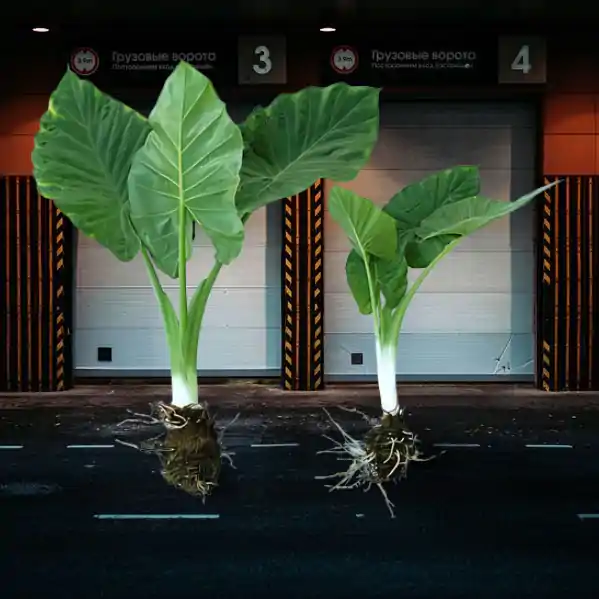The knowledge about when to plant elephant ear bulbs would be handy if you want your plants to grow healthy and well. Whereas most people think that all plants are the same, they are actually different from one another. Elephant ear plant is a term that is used for groups of herbaceous perennials which are popular for their big and huge leaves. The leaves are typically coming in the form of a heart or an arrowhead. The elephant ear plant is a tropical plant, meaning that they can be easily found in tropical regions, such as Southeast Asia.
About the Various Species of Elephant Ears
Elephant ears are divided into two major groups: Colocasia and Alocasia. Colocasia is one of the most popular types – mostly known as Taro plant. If you want to make your landscape looks great and spectacular, include either Colocasia or Alocasia in your property. You can even include both to create a more drastic look.
Colocasia, especially, have unique combo of big leaves and long stalks. If you have one, it would instantly add a tropical atmosphere to your property. On the contrary to what people believe, elephant ear plants are coming in various colors; not only limited in green. You can find black, deep green, and even purple elephant ears. Consider yourself lucky if you live in a warm area because this plant loves humid and hot surroundings. However, it’s also possible to have the plants in pots or containers if you want to. But again, you need to pay attention to the variant or species. Some species can grow very tall, up to 15 feet, while some can be quite compact.

How to Plant the Bulbs
Aside from the knowledge about when to plant elephant ear bulbs, you should also know the proper steps to do it.
- Determine the location first. Depending on the species, you need to choose a place that can get direct sunlight for several hours a day and then ‘hidden’ in partial shade for the remaining of the time. In general, though, all types of elephant ear plants need protection from strong winds, so make sure that you can provide the perfect spot for it. It would be best if you can find a spot that can accommodate 70 degrees Fahrenheit during the day and above 50 degrees Fahrenheit at night.
- Consider the soil. The plant loves rich soil that is a bit acidic. The pH level should be from 5.5 to around 7.0. Some gardeners may add lime to add the level up. They may also add sulphur to lower the pH if it’s too strong. If you believe that your soil isn’t rich in nutrients, you can treat it. Add up manure or compost on the soil; top it off up to 2 inches to ‘treat’ it. By then, your soil should be ready for the planting.
- Dig a hole. Make sure that the hole is bigger than the bulb – up between 2 and 4 inches. You should position the flat end points down. Then cover the bulb with the soil and lightly firm it. This principle should also be used when to plant elephant ear bulbs in pots. That’s why you should choose relatively big or huge containers if you want to grow them in pots.
- Elephant ears like moist soil. Being tropical plants make the elephant ears in love with fertile soil, moist surrounding, and warm temperature. Make sure that you water the soil regularly. You should keep the soil moist, but not soggy. Never let the soil to completely dry out between the watering times or your plants won’t survive. The simplest way to check it is to touch the soil. If it feels moist, then you don’t need to add more water. If it feels a bit dry (but with still moist feel), then you may want to add water. Overwatering is bad, and so is underwatering. You only need to make sure that the plants have enough moisture.
- You can also fertilize the plant once a month. Make sure to use balanced fertilizer. If your plant is struggling, you should fertilize it around twice a month.
- If you find any leaves that are straggly or turning brown, cut them off before they affect other leaves.